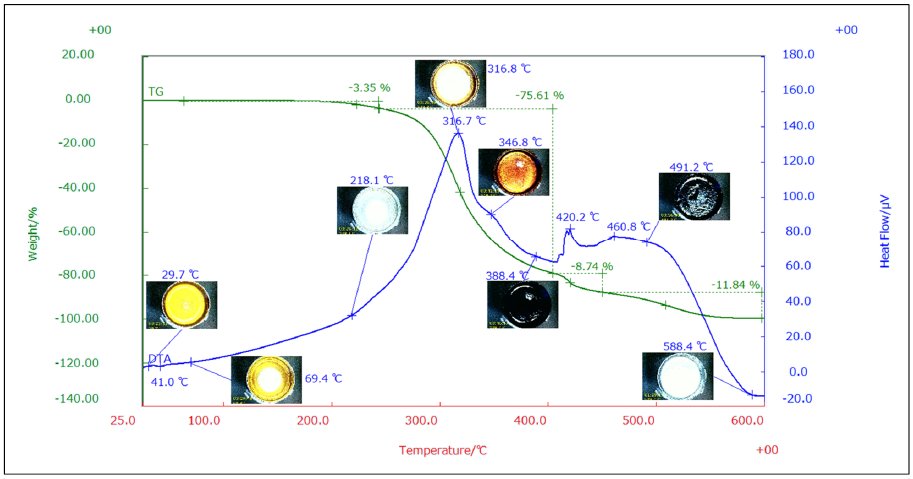Application Note B-TA1019
Introduction
In recent years, simultaneous thermal analysis (STA) equipped with sample observation capability has increasingly becoming popular in the field of material characterization and evaluation using thermal analysis. Using this attachment, simultaneous measurements of TG, DTA/DSC as well as capturing the sample’s actual changes in color, shape and volume can be observed visually thru live captured images providing a more detailed information.
Red palm oil is a vegetable oil that consists mainly of triacylglycerols composed of unsaturated and saturated fatty acids. This oil is widely used in the food industry, beauty products as well as biofuel. In this application, the thermal behavior of red palm oil is evaluated using the sample observation STA.
Measurements and results
A 5 mg red palm oil sample was placed in a Pt pan and was heated in air atmosphere up to 600℃ heating at 10℃/min. The live captured images were set at 1 capture per second throughout the measurement.
Figure 1 shows the sample observation STA result of red palm oil. As the temperature increases, an endothermic peak due to melting can be observed at 41℃ showing a physical change from semi-solid to liquid phase. Then from 150℃ onwards, several stages of mass losses can be observed accompanied with various exothermic reactions, revealing thermal events namely auto-oxidation phenomena causing discoloration (1) at 218℃; and oxidative decomposition at 316℃ indicating a change in color from transparent to yellowish brown. Then at 388℃, the sample’s color changed to black due to carbonation followed by combustion from 420℃. At the end of the measurement, a complete mass loss is observed without any residue.
Over the years, the analytical method in confirming the actual change in color especially auto-oxidation in oils required a series of analytical procedures involving complicated extraction methods. However, the advantage of sample observation attachment in STA has easily allowed the actual observation of these color changes due to auto-oxidation and other reactions.

Figure 1: Sample observation STA result of red palm oil
Reference
(1) S. Vecchio Ciprioti et. al.: Eur. J. Lipid Sci. Technol., 118 (201), 1-16

